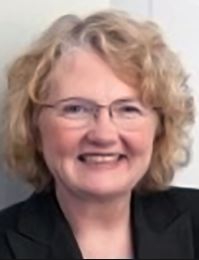How Academia, Physicians, And Patient Groups Will Impact Patient Recruitment

By Ed Miseta, Chief Editor, Clinical Leader

Thirty years ago, patient recruitment was a challenge for pharma companies. Today the patient participation rate in trials still hovers around five percent and is not expected to improve anytime soon. Mary Rose Keller, VP of Clinical Operations at Heron Therapeutics, shares some of her thoughts on the recruitment challenge and what pharma must do to overcome it.
Ed Miseta: What are the bottlenecks that continue to plague patient recruitment?
 Mary Rose Keller: In the early 2000s, I worked for Pfizer and the biggest challenge for the development operations team was patient recruitment. I was given a budget, a few employees, and a couple of consultants and asked to solve the patient recruitment problem. Needless to say, we did not solve the problem. Part of the problem is that there is no silver bullet. There is no one scenario that works for every study and every situation.
Mary Rose Keller: In the early 2000s, I worked for Pfizer and the biggest challenge for the development operations team was patient recruitment. I was given a budget, a few employees, and a couple of consultants and asked to solve the patient recruitment problem. Needless to say, we did not solve the problem. Part of the problem is that there is no silver bullet. There is no one scenario that works for every study and every situation.
In my last Phase 3 program, we knew that to meet our corporate objectives we would have to recruit at a pace that hadn’t previously been done in that therapeutic area. We put a person in charge of recruitment and asked them to meet with study personnel at every site. Each site was asked what they needed in order to recruit patients. There were 30 sites and we received 30 different responses. One site needed Spanish radio ads. Another needed newspaper advertising. Other sites were interested in social media but didn’t understand how it worked.
One site was interested in local physician referrals. Some sites wanted to use Craigslist while others had an interest in Facebook. For each site, we helped them put together a campaign that delivered a message to patients in the format they felt was most appropriate. A tremendous effort was required to make this successful, and we met our recruitment objectives. But it required a lot of hard work.
Miseta: How much help can you get from patient advocacy groups?
Keller: They can be critical. If you happen to be working in a therapeutic area with a disease that has a patient advocacy group, they can be huge in helping with patient recruitment.
I sometimes hear that sponsors can be reluctant to engage with these groups. That’s amazing to me. Advocacy groups are always looking for new solutions. They can also help patients when it comes time to decide about participating in a clinical trial. If the patients you are looking for have an advocacy group, that should always be your first stop.
Miseta: Why would sponsors be reluctant to engage with these groups?
Keller: A lot of diseases have multiple advocacy groups. Sometimes sponsors have anxiety about being associated with one advocacy group versus another. They also don’t feel they can adequately serve all of the groups. And, let’s face it, once you put a group together, they can become political in some way. That is something sponsors can be leery of.
What inevitably happens is sponsors try to figure out how they can engage with advocacy groups without showing favoritism to any of them. While this can get complicated, it is something worth figuring out. Almost every illness or disease, including rare diseases, have some sort of advocacy movement. Pharma must figure out how to properly engage with these groups.
Miseta: Are sponsors getting better at working with patients?
Keller: I think so. Some companies have created a role called the patient engagement specialist. If a patient or caregiver contacts a call center and requests information on trials, we now have an individual who’s been trained on how to interact with the patient and not be too directive, listen but not go overboard, can have the conversation with the patient and get them directed, if not to the clinical trial then someplace where they can get some support.
Miseta: We are seeing more groups like Find Me Cure and Patients Like Me that are offering companies a more systematic way of reaching patients. We also have patient networks and large patient cohorts such as the Veterans Administration. Will they begin to have an impact on recruitment?
Keller: I can tell you there’s nothing scarier than discovering a chat room in which some little splinter group has formed and is actively discussing your clinical trial. We have to start thinking about those kinds of things. This is a new way for patients, caregivers, and physicians to interact, and we must be aware that it is happening and have a plan to deal with it. It’s something that is not going away.
I would also say that if you are trying to ignore it, you’re making a big mistake. Pharma companies are going to have to figure out how to interact with Patients Like Me and the cohort groups. We must help them to understand that one of these chat groups could potentially destroy a clinical trial before it’s even finished. Patients chatting about a trial can reach certain conclusions based on limited knowledge and experience. It’s something we need to be aware of.
Miseta: Are physicians more open to referring patients to trials?
Keller: This is an issue I call, “ownership of the patient.” If we could figure out a way to solve this problem, clinical trials would be much easier to recruit. The problem is physicians are often reluctant to send their patient to a clinical trial site. If they do so they could lose the patient. There is no real motivation for them to make the referral.
We need to figure out, as an industry, how to keep the referring physician involved when the patient is referred to a clinical trial site. If we can do that, we will bypass a huge hurdle that is blocking patient recruitment efforts. This is a hurdle that will exist with mobile sites as well. Every mobile site will have an owner site that is probably not going to be within that community. That means they will face many of the same challenges. When we figure out how to keep that referring physician involved, many of our patient recruitment problems will go away and may even increase the quality of the data especially in studies where long term follow up in needed.
Miseta: Years ago, most clinical research was performed in hospitals. Today, a large amount of the leading, world-class research is being performed in academic settings such as Duke, Harvard, and Penn. How does that impact recruitment?
Keller: You bring up an interesting point. I think this represents a big challenge for the industry. These new camps will definitely impact the industry moving forward. These centers are conducting research and have their own perspectives on how they are going to develop therapeutic techniques for their own in-house products. Like any product developed by pharma, they are going to be protected by patents and have potential commercial value. How we extend that and expand it beyond the academic center remains a question that we haven’t fully addressed.
Pharma companies used to have partnerships with these academic institutions, and pharma would assist in the development and commercialization. Unfortunately, as the institutional patent attorneys became more visible and more proficient, many of those relationships were effectively terminated. The reason the relationships were terminated is because of the inability to resolve challenges around the future development of the product. Academia is changing the landscape and we need to figure out how to manage that.
